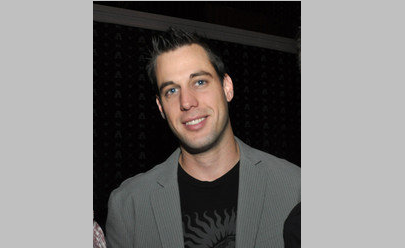Catalyst S+F: Managing your Brand's Social Campaign. Part 1: Why do Your Customers Use Social Media? - Ryan Huber - MediaBizBloggers

More and more brands are flocking to social media with high hopes of leveraging this new medium to engage users and increase brand recognition. Unfortunately, most brands don’t fully understand the dynamics behind social media, and end up running a campaign that gets mediocre acceptance and fails to meet expectations.
To expand upon this, most brands flock to Facebook and Twitter specifically because they see their competitors there. While I can appreciate not wanting to be leapfrogged in the market, there’s a lot to take into consideration before initiating a social campaign. Over the course of 5 posts (this is part 1) I will be diving into the social fundamentals to help you better understand, plan, implement, and measure your next social campaign.
1. Why do your customers use social media?
2. Beyond simple posts - what capabilities do social platforms provide that can differentiae you from the competition?
3. Why would your customers want to engage with your brand on a specific social medium, and what should you say?
4. How do you successfully plan out a social media content calendar?
5. How to measure the success of your social media campaign, and what tools should you leverage?
Why do your customers use social media?
The answer to this question can vary from user to user, and typical users use social media for multiple reasons, not just one. By understanding the multiple reasons users interact with various social networks one is able to create a multi-tier campaign that is relevant to the majority of social users, thus driving higher engagement. Please note, for the sake of this post I’m focusing purely on personal usage of social media, not business usage. These two differ greatly.
Sex:
Yes, I said it! Meeting the opposite sex is probably one of the driving factors for youth adoption of social media. After all, the initial purpose of Facebook was to take the college experience and put it online. But it doesn’t stop at just youth, according to a 2008 report by the Pew Internet and American Life Project, about 1 in 5 adults use Facebook for flirting. And just last year MSNBC ran the story “Facebook is divorce lawyers’ new best friend”, where oversharing has contributed a staggering amount of evidence in divorce cases. How much you ask? Well, The American Academy of Matrimonial Lawyers stated “81 percent of its members have used or faced evidence plucked from Facebook, MySpace, Twitter and other social networking sites, including YouTube and LinkedIn, over the last five years.” Now I’m not advocating using sex to help market your product, but it is important to understand the driving force sex has on social media.
Narcissism:
Initially the Internet was founded on the premise of anonymity. Today, the lines between real life and online are blurred; a user’s online life can easily be a direct extension of their real life. Users are feverishly pumping massive amounts of personal data into social media sites. This has caused an influx of narcissistic tendencies.
CNNTech recently ran an article outlining research from York University in Toronto, Canada on the affects Facebook had on narcissism. The study found that students that exhibited narcissistic tendencies had “About Me sections that referred to their intelligence and photos that were more about displaying the user's physical attractiveness than about capturing memories with friends.” The study expanded further and found that men were more likely to outline their intelligence and wit, while women uploaded revealing photos showing off their physical appearance.
Photos, Memories, and Relationships:
Finally we’ve hit a social driver that doesn’t have a negative stigma associated with it. The sharing of moments and memories has forever been changed by the introduction of social media. Social media users love to interact with rich media, so much so that roughly 2.5 billion photos are uploaded to Facebook each month. This is no small feat given that Flickr houses a total photo library of over 4 billion.
With real-time access to any particular person’s life, social media is radically transforming the way people maintain their social relationships. Dunbar’s number is “a theoretical cognitive limit to the number of people with whom one can maintain stable social relationships.” These are relationships where “an individual knows who each person is, and how each person relates to every other person.” While no precise value has been established for Dunbar’s number, most put the number at roughly 150 relationships.
But this is all changing now - the fundamental mechanisms of social media automates this process for us, providing the tools necessary to bypass cognitive limits and maintain more relationships then previously possible. Two years ago the average number of friends an individual was connected to on social media was 77. Today, it’s roughly 130. As Facebook exceeds 600 million users and more people embrace social media, we will continue to see this number pushed higher and higher.
News, Entertainment, and Trends
Double rainbow, that cute cat playing the piano, Obama’s inaugural speech – the discovery of content, creation of user generated content, and distribution channels for mainstream media have exploded alongside social. Users love to share pieces of information they find interesting and entertaining. Over 30 billion pieces of content are shared on Facebook each month (web links, news stories, blog posts, notes, photo albums, etc.). Roughly 75% of the news we consume online is through shared links via social media, and 52% forward news along to friends.
Feeling Closer to Celebrities and Influencers
Americans have always been fond of their celebrities, wanting to know more and more about their daily lives. Social media has proved to be just the outlet where celebrities and fans can feel closer connected; some fans have even been able to connect directly with celebrities via sites like Twitter. Some of the top Twitter accounts are owned by celebrities; Ashton Kutcher has 6.2 million Twitter followers, Britney Spears has 6.6 million, and Kim Kardashian has 5.9 million. Even President Obama leverages Twitter to reach out to his 6.3 million followers.
Celebrity social media profiles have become so powerful, that some have asked the FTC to step in and regulate what celebrities are allowed to say. Case and point, Kim Kardashian makes, on average, $10,000to tweet about a product or service.
Be sure to checkout my next post where I’ll dive into different social platform capabilities to help differentiate your social media campaign from the competition.


